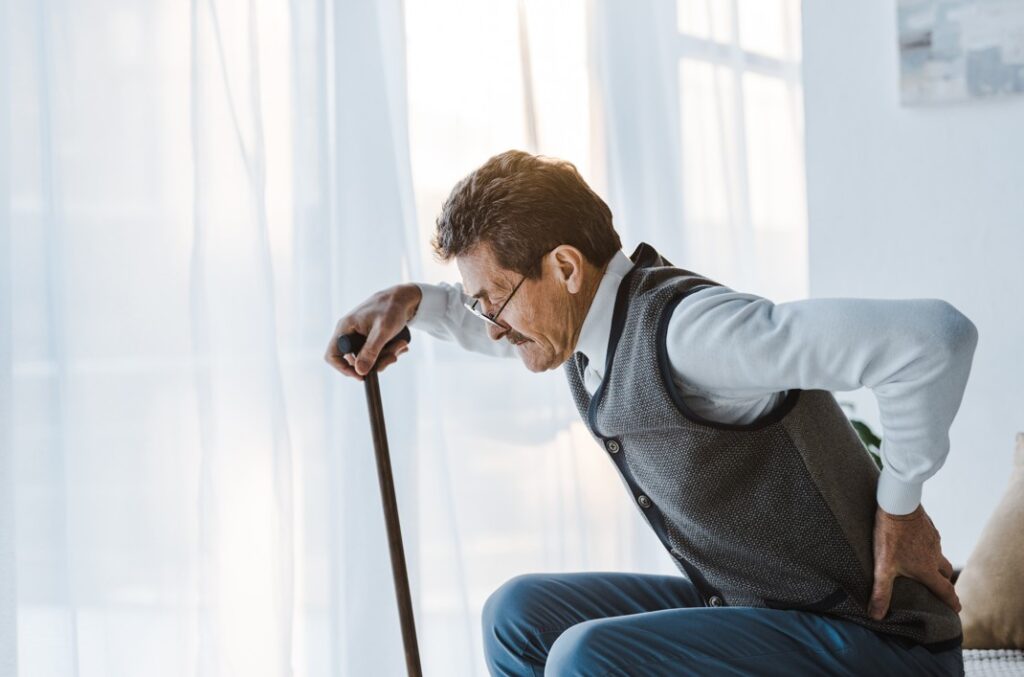Why “Bone on Bone” Doesn’t Have to Be a Life Sentence
Have you ever left a medical appointment feeling more worried about your pain than when you went in? If you’ve been told you have “bone on bone” arthritis, “degenerative disc disease,” or “wear and tear,” you’re not alone in feeling concerned about what this means for your future.
Here’s the thing, though: the words used to describe your condition can actually affect how much pain you experience and how well you recover. Let me explain why this matters and what you can do about it.
When Medical Language Creates Fear
When patients visit my clinic, they often arrive with MRI reports filled with scary-sounding terms. They’ve been told their joints are worn out, their discs are degenerating, or they have bone rubbing against bone. Understandably, this creates fear about moving and potentially causing more damage.
This fear has a name – kinesiophobia – and it’s the fear of movement based on the belief that it will cause pain or injury. Research shows that when you believe movement will harm you, you actually experience more pain, even when the movement is perfectly safe.
There’s also something called the nocebo effect, which is essentially the opposite of the placebo effect. When healthcare professionals use negative language or set poor expectations, it can genuinely make your symptoms worse.
The Movement Trap
When fear combines with pain, many people naturally reduce their activity levels. It makes sense; if moving hurts, surely moving less will help? Unfortunately, this creates a problematic cycle.
Reducing movement leads to:
- Muscle Weakness – Muscles that aren’t used regularly lose strength and endurance, making any movement feel harder when you do try
- Joint Stiffness – Without movement, joint fluid circulation slows, reducing lubrication and making stiffness worse
- Reduced Blood Flow – Less activity means poorer circulation, which can delay healing and contribute to fatigue
- Pain Sensitisation – The nervous system can become more sensitive to pain signals, a process known as central sensitisation
- Loss of Confidence – Fear of movement can shift from being about pain to being about the belief that you’re fragile or at risk of damage
The result? Daily activities like climbing stairs or walking to the shops become more exhausting and potentially more painful.

Movement Really Is Medicine
Modern pain science tells us that staying active is crucial for managing pain conditions. This doesn’t mean pushing through severe pain or ignoring your body’s signals. Instead, it’s about gradually increasing movement in a way that feels manageable and safe.
Think of it this way: your joints need movement to stay lubricated, just like a door hinge needs oil to work smoothly. When you move, you’re essentially oiling your joints with your body’s natural lubricant, synovial fluid.
Practical Steps Forward
If you’re dealing with scary-sounding diagnoses and fear about movement, here’s how to start breaking the cycle:
Reframe the language
Instead of focusing on “bone on bone,” think “oiling your joints with your internal WD-40”. The words you use (and that others use about your condition) genuinely influence how your brain processes pain.
Start small
If a walk around the block feels daunting, begin with walking around your kitchen. Gradually increase the distance or time as you feel more confident.
Use graded exposure
Slowly reintroduce movements that worry you in a controlled, safe environment. This helps retrain your nervous system to trust movement again and reduce your pain.
Mix up your exercises
Swimming, cycling, tai chi, or gentle yoga can all be excellent options. Different activities work different muscle groups and help prevent boredom.
Keep it regular
Even five to ten minutes of movement daily is more beneficial than sporadic intense sessions.
Make it enjoyable
There’s no point forcing yourself through activities you hate. Find movements you actually enjoy – dancing, gardening, playing with grandchildren – and focus on those.
The Right Kind of Help
Working with a healthcare professional who understands both the physical and psychological aspects of pain can make a significant difference. Look for someone who uses positive, encouraging language and focuses on what you can do rather than what you can’t.
Remember: Movement isn’t about ignoring pain; it’s about finding the right kind of movement that helps you feel stronger, more mobile, and more in control.

Moving Forward
The next time someone uses frightening medical terminology to describe your condition, remember that these terms describe structural changes, not your potential for recovery. Your body is remarkably adaptable, and with the right approach, you can often achieve significant improvements in both pain and function.
Movement isn’t about ignoring pain; it’s about finding the right kind of movement that helps you feel stronger, more mobile, and more in control of your condition.
If you’re struggling with fear around movement or need guidance on where to start, find someone who has an understanding of the problem and can offer practical advice on how to resolve it. Don’t forget that I offer free 15-minute assessments and will do whatever I can to help you.
I hope you found this article useful.
You can always get in touch if you have any concerns for yourself for someone you know.
